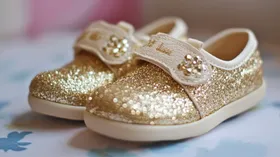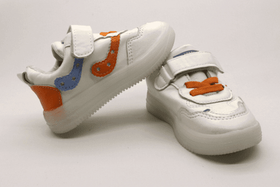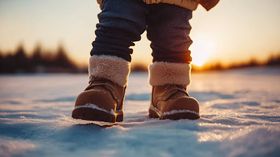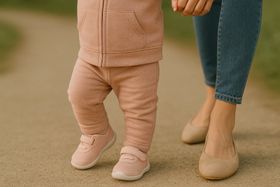10 Best Shoes for Pigeon-Toed Toddlers: Support and Comfort
Give your pigeon-toed toddler the best start with supportive, comfortable footwear that promotes healthy foot development
Updated November 25, 2024
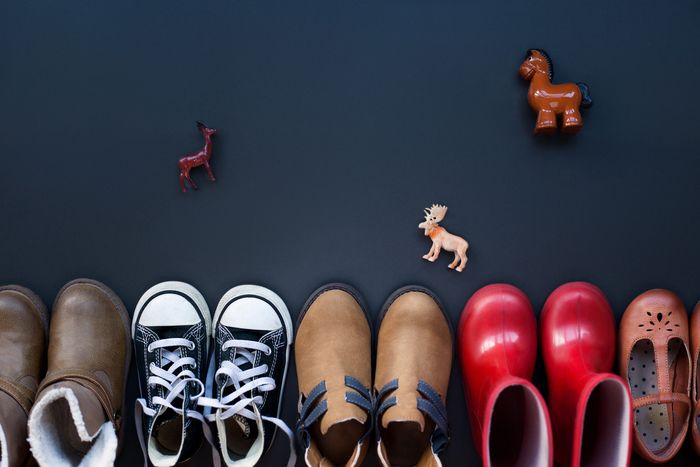
Watching your child take their first steps is a magical milestone in their development. For some parents, this joy might be accompanied by concern when noticing their child's feet turning inward while walking—a condition known as in-toeing or being "pigeon-toed." [1]
While this common condition often resolves naturally, choosing the right footwear can significantly improve your child's comfort and development.
Our Pick: Best Shoes for In-Toeing Toddlers
- Best overall shoes for in-toeing - Gianna Raspberry
- Best girls' shoes for in-toeing - Glorious Flamingo
- Best boys' sandals for in-toeing - Nigel the Harbor Boss
- Best toddler boots for in-toeing - Taylor Warms
- Best girls’ sandals for in-toeing - Arianna Florets
- Best winter boots for in-toeing - Hazel Canary
- Best boys' shoes for in-toeing - Denver the Dinosaur
- Best Velcro boots for in-toeing - Johnny Rocket
- Best toddler sandals for in-toeing - Ultramarine J
- Best zip-up shoes for in-toeing - Ezra Batman
What Is In-Toeing?
In-toeing occurs when a child's feet turn inward instead of pointing straight ahead during walking or running. This condition is often inherited and typically resolves naturally as children grow. While it rarely causes pain or developmental issues, some children may experience:
- Slight changes in walking pattern
- Occasional tripping or stumbling
- Decreased coordination in some cases
- Fatigue during extended physical activity
How the Right Shoes Can Help In-Toeing
Specialised footwear plays a vital role in supporting toddlers with in-toeing by combining corrective features with comfort and durability. These shoes are engineered to guide foot alignment while allowing natural movement and growth, making them an essential tool in your child's development.
Parents should expect these benefits from proper footwear:
- Children typically demonstrate improved balance and stability during both walking and running activities.
- The supportive design helps reduce fatigue during extended physical activities and play sessions.
- Proper foot alignment often leads to better overall posture throughout the entire body.
- Kids usually show increased confidence in movement and willingness to participate in physical activities.
- These shoes can help prevent the development of compensatory movement patterns that could cause issues later.
While shoes can significantly aid foot alignment, progress happens gradually and varies by child. Consistent wear combined with regular monitoring usually shows the best results.
10 Best Shoes for Pigeon-Toed Toddlers
What to Look for in Shoes for Pigeon Toeing
When selecting shoes for a child with in-toeing, consider the following features to provide the necessary support and correction:
- Secure and Adjustable Fit: Ensure the shoe fits snugly but comfortably without slipping or causing discomfort. Try shoes with multiple closures, such as laces, Velcro straps, or buckles, to ensure a customised fit.
- Extended Ankle Support: The shoe should provide ample support to the ankle joint to prevent it from rolling inwards, which can exacerbate pigeon toes. Look for shoes with a higher ankle cuff or additional ankle straps.
- High Built-in Arch Support: A well-defined arch support helps to prevent the foot from collapsing inward, promoting a more neutral alignment.
- Dense Heel Counter: A firm heel counter helps to prevent the heel from rolling inwards, which is common in children with pigeon toes.
- Non-Slip Outsole: A non-slip outsole provides good traction and stability, reducing the risk of falls and injuries.
- Consider Orthoses: If your child is prescribed ankle-foot orthoses (AFOs) or static moulded orthoses (SMOs), ensure the shoe is designed to accommodate them. Look for shoes with wider toe boxes and deeper heel cups to provide adequate space for the orthoses.
- Consult with a Professional: It's always recommended to consult with a paediatrician or podiatrist for personalised advice on the best options for your child's specific needs.
Supporting Your Child's Natural Growth
Most children with in-toeing grow up to have normal foot alignment. With proper support, monitoring, and the right shoes, your kid can develop confidence in their mobility and enjoy all the physical activities that make childhood special.
The key is to remain patient and supportive while ensuring your child has the right tools—including proper footwear—to support natural development. Regular monitoring and professional guidance when needed will help ensure the best possible outcomes for your child's foot health and overall growth.
References:
- G. Rocca, A. De Venuto, G. Colasanto, S. O. Zielli, A. Mazzotti, and C. Faldini, “Congenital metatarsus varus: early diagnosis and conservative treatment in 112 patients,” MUSCULOSKELETAL SURGERY, vol. 107, no. 4, pp. 379–384, Jun. 2022, doi: 10.1007/s12306-022-00751-0. Available: https://doi.org/10.1007/s12306-022-00751-0
FAQs
At what age does in-toeing correct itself?
In-toeing typically corrects itself between the ages of 4 and 6. However, if it persists or becomes severe, it may require medical intervention.
What are the pigeon toe exercises for toddlers?
- Encourage crawling on all fours to strengthen the feet and legs.
- Allow your child to walk barefoot indoors and outdoors to promote natural foot development.
- Practice toe curls, toe spreads, and toe picking up objects to improve foot strength and flexibility.
- Play with a ball to encourage proper foot placement and coordination.
- For specific exercises and guidance, consult a pediatrician or physical therapist.
Can physio help pigeon-toed children?
Yes, physical therapy can be beneficial for children with pigeon toes. A physiotherapist can provide targeted exercises and stretches to improve foot alignment, strengthen muscles, and reduce the inward rotation of the feet.
What does the pigeon toe walking pattern result from?
- Tight calf muscles can pull the foot inward, causing pigeon toes.
- This is a condition where the forefoot is angled inward.
- These are rotational abnormalities in the foot or leg bones.
- Certain neurological conditions, such as cerebral palsy, can affect foot alignment.
When should I worry about in-toeing?
You should worry about in-toeing if:
1. It persists beyond the age of 6.
2. It is accompanied by pain or discomfort.
3. It interferes with walking or running.
4. It is associated with other developmental concerns.
Disclaimer: First Walkers' information is intended for educational and informational purposes related to toddler footwear and feet. We encourage you to consider individual circumstances and consult qualified orthopedists about specific conditions.
